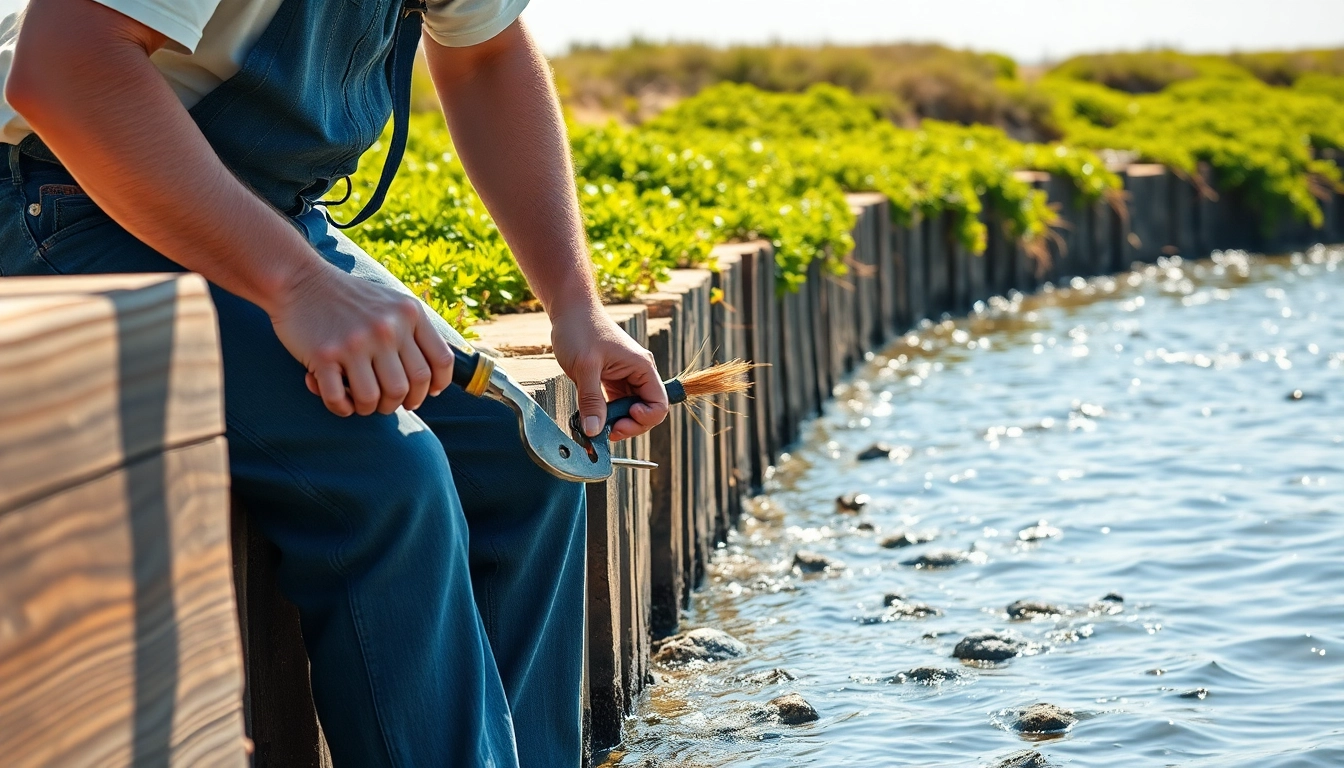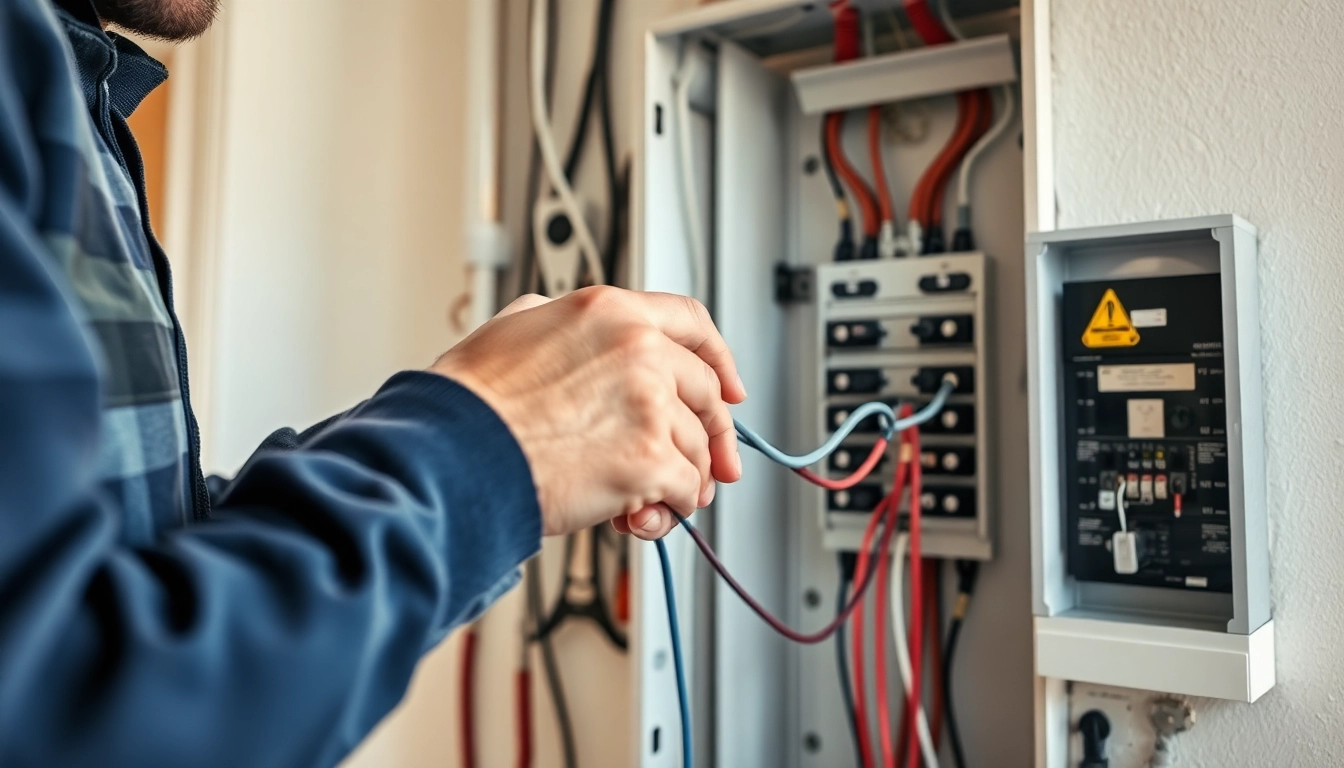Understanding Bulkhead Repair
What is Bulkhead Repair?
Bulkhead repair refers to the process of restoring or reinforcing a bulkhead, which is a retaining wall or barrier that separates land from water. These structures are essential in waterfront properties, serving as protective barriers against erosion, flooding, and other environmental factors. The integrity of a bulkhead is crucial for maintaining waterfront property value and ensuring safety against natural events. Understanding the basics of bulkhead repair involves recognizing the materials used, the typical techniques applied, and the conditions that necessitate repair.
Common Issues Requiring Bulkhead Repair
Several issues can arise that necessitate bulkhead repair. Common problems include:
- Cracks and Gaps: Over time, bulkheads may develop cracks or gaps that allow water to seep through, weakening the structure.
- Warping or Bowing: Environmental stressors can lead to warping, causing misalignment and instability.
- Rotting Wood: Wooden bulkheads are particularly susceptible to rot caused by moisture, fungi, or marine borer infestation.
- Soil Erosion: The soil surrounding a bulkhead can erode, reducing its effectiveness and creating further structural challenges.
- Settlement: As bulkheads settle over time, they may become unstable, leading to potential failures in the protective barrier.
The Importance of Regular Maintenance
Regular maintenance is a vital aspect of preserving bulkheads. Frequent inspections can help identify minor issues before they escalate into significant problems that require extensive repairs. Maintenance activities such as cleaning, sealing cracks, and reinforcing weakened areas not only extend the lifespan of the bulkhead but also ensure ongoing protection against flooding and erosion. Establishing a routine maintenance schedule can save property owners considerable costs associated with major repairs and replacements down the line.
Bulkhead Repair Techniques
Traditional Bulkhead Repair Methods
Traditional methods of bulkhead repair often involve proven techniques that have stood the test of time. These methods include:
- Using Timber Piles: One common technique is reinforcing or replacing sections with treated timber piles, which are driven deep into the soil to provide stability.
- Concrete Backfill: Utilizing concrete can bolster the integrity of a damaged bulkhead, providing a solid barrier against water intrusion.
- Riprap Installation: Large rocks or boulders can be placed along the base of a bulkhead to prevent erosion from waves and currents.
Modern Innovations in Bulkhead Repair
Modern innovations in bulkhead repair embrace advanced materials and technologies for improved structural integrity. These include:
- Composite Materials: Composite materials are increasingly being used for their durability and resistance to moisture and decay.
- Geosynthetics: These materials can be employed to reinforce soil and prevent erosion effectively.
- Modular Systems: Prefabricated modular systems can expedite installation and ease the repair process, allowing for flexible design options.
Choosing the Right Materials for Bulkhead Repair
When selecting materials for bulkhead repair, it is crucial to consider the specific environmental conditions and the type of bulkhead. For instance, marine-grade plastics and metals offer enhanced durability in saline environments, while pressure-treated lumber is often used for traditional wooden bulkheads. The right choice of materials can significantly impact the longevity and effectiveness of the repair, ensuring that it can withstand environmental stresses while providing the necessary support.
Signs You Need Bulkhead Repair
Visual Indicators of Damage
Identifying visual signs of damage is crucial for timely bulkhead repair. Some indicators include:
- Cracks or Splits: Look for obvious cracks or splits in the structure, which may indicate underlying weaknesses.
- Displacement: Any noticeable movement or tilting of the bulkhead suggests that the soil support is compromised.
- Visible Rot: Darkening or discoloration of wood indicates rot, which necessitates immediate attention.
Physical Signs to Look For
In addition to visual cues, physical signs can signal a need for repair:
- Soft Spots: Areas of wood that feel soft to the touch may be rotten and need replacement.
- Water Pooling: If there are puddles forming around the base of the bulkhead, this may indicate a failure in drainage.
- Erosion Patterns: Increased soil erosion around the bulkhead can compromise its stability and performance.
Consequences of Neglecting Bulkhead Repair
Neglecting necessary bulkhead repair can have significant repercussions, including:
- Increased Erosion: Failure to repair small issues can lead to larger erosion problems, threatening the integrity of the bulkhead.
- Property Devaluation: A damaged bulkhead can negatively impact property value, reducing its attractiveness to potential buyers.
- Increased Repair Costs: Delaying repairs can escalate costs exponentially as damage worsens.
DIY Bulkhead Repair vs. Professional Help
When to Consider DIY Bulkhead Repair
Some bulkhead repairs can be addressed through DIY methods, particularly minor issues such as sealing small cracks or replacing boards. Homeowners with technical skills and the appropriate tools may find that tackling simple maintenance tasks themselves can save money. However, DIY repairs should only be considered when:
- The damage is minor and clearly identifiable.
- You possess the necessary tools and knowledge to perform the repair effectively.
- Safety risks are minimal, and there’s no chance of further damage.
Benefits of Professional Bulkhead Repair Services
Engaging professional bulkhead repair services offers several advantages. Experts bring specialized knowledge and experience, allowing them to accurately assess the situation and implement effective solutions. Benefits include:
- Thorough Inspections: Professionals can perform comprehensive evaluations that might uncover issues not visible to the untrained eye.
- Quality Materials and Techniques: Professionals often use high-quality materials and advanced techniques, ensuring longevity and performance.
- Warranty and Guarantees: Many professional services provide warranties on their work, giving homeowners peace of mind.
Cost Comparison: DIY vs. Professional Bulkhead Repair
When evaluating the cost of DIY versus professional bulkhead repair, factors such as material costs, time investment, and the potential for costly mistakes should be considered. While DIY might initially seem more economical, a poor repair could lead to significant expenses down the road. In contrast, professional services may command higher upfront costs but often pay off in terms of quality, durability, and long-term savings.
Long-term Benefits of Effective Bulkhead Repair
Enhancing Property Value with Bulkhead Repair
Effective bulkhead repair can significantly enhance property values. A well-maintained bulkhead not only provides functional benefits but also improves the aesthetics of waterfront properties. Buyers are more likely to invest in properties with sturdy bulkheads, knowing that they represent a lower risk of erosion and flooding. Over time, suitable repairs and enhancements can increase resale value remarkably.
Environmental Benefits of Proper Bulkhead Repair
Proper bulkhead repair has positive implications for the environment. Effective bulkhead systems help prevent soil erosion, which can contribute to water quality issues in nearby ecosystems. Moreover, by mitigating flooding, bulkheads protect local habitats, ensuring that flora and fauna are preserved. Properly designed and maintained bulkheads also support shoreline stability, promoting healthier coastal areas.
Best Practices for Future Bulkhead Maintenance
To ensure the longevity of bulkhead structures, adhere to best practices for future maintenance:
- Conduct Regular Inspections: Schedule inspections at least once a year to identify and address issues early.
- Keep Clear of Debris: Regularly remove vegetation and debris that can trap moisture against the bulkhead.
- Seal Joints and Cracks: Apply sealants to joints and cracks to prevent water penetration and further damage.
- Consult Experts: Don’t hesitate to engage professionals for advice or when facing significant repairs.


